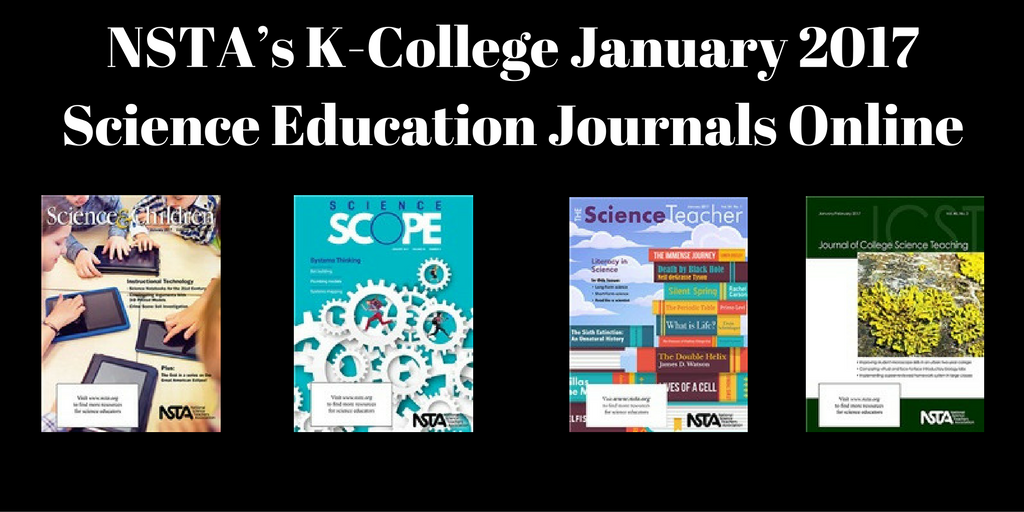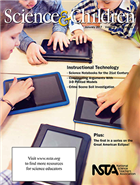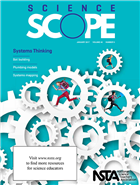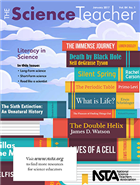NSTA’s K-College January 2017 Science Education Journals Online
By Korei Martin
Posted on 2017-01-05
Want to use technology to enhance your elementary classroom? Looking to get your middle level students to understand how different parts in a system interact? Want ways to help your high school students to think critically? Or do you just need want resources to create case studies for your college students? The January K-College journals from the National Science Teachers Association (NSTA) have the answers you need. Written by science teachers for science teachers, these peer-reviewed journals are targeted to your teaching level and are packed with lesson plans, expert advice, and ideas for using whatever time/space you have available. Browse the January issues; they are online (see below), in members’ mailboxes, and ready to inspire teachers.
Students are more than digital natives; they are embedded in technology. Thus, teachers must frequently use technologically advanced tools in the classroom. This requires a change in approach and assessment. In this issue, students learn science with technology, which enhances both subjects.
Featured articles (please note, only those marked “free” are available to nonmembers without a fee):
- Science Notebooks for the 21st Century
- What’s Lurking in Our Lake?
- Zooming in on Science
- Free – Constructing Arguments With 3-D Printed Models
- Free – Editor’s Note: The Dilemmas of Technology
- Table of Contents
Understanding how the different parts of a system interact is an important first step in trying to solve the complex problems facing our world today. We hope the activities in this issue of Science Scope will get your students’ gears turning as they explore how systems can lead to solutions both in the classroom and in the real world.
Featured articles (please note, only those marked “free” are available to nonmembers without a fee):
- Building Bots to Develop Systems Thinking
- Call the Plumber! Engaging Students With Authentic Engineering Design Practices
- Classic Lessons 2.0: Falling Into Understanding
- Free – From the Editor’s Desk: Systems Thinking Solutions
- Free – Using Systems Mapping to Plan Scientific Investigations
- Table of Contents
Today’s students are dazzlingly fluent digital natives. They text, blog, Snapchat, Instagram, and Facebook. They use search engines; they ask their smartphones for answers to questions that, in a different era, might have required a trip to the library. But a recent study of middle school, high school, and college students found that many students—over 80% in some cases—couldn’t tell the difference between an advertisement and a news story, distinguish between a real and fake news source, identify bias in a tweet, or determine if a website could be trusted. It is imperative that students learn to think critically and engage in argument based on reliable evidence. What better place for them to learn this than in science class? This issue offers tips and techniques for engaging students in reading critically—including classic science books such as those on this month’s cover—and writing clearly.
Featured articles (please note, only those marked “free” are available to nonmembers without a fee):
- Read Like a Scientist
- Short-Form Science
- Text Savvy
- Free – Long-Form Science
- Free – Health Wise: Why Teens Need the HPV Vaccine
- Table of Contents
Journal of College Science Teaching 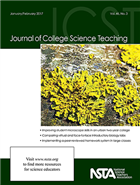
If you are interested in curricula that mirror the interdisciplinary and collaborative research environments of practicing scientists, see how several authors attempted to implement what they termed the Chemistry-Genetics Course Collaborative, a cotaught offering of a human genetics course with an honors introductory chemistry course. Want to create case studies that are more interesting? Read Clyde Freeman Herreid’s article in the Case Study column that describes the secret ingredient that sets great case studies apart: They have personality. And in the Research and Teaching department, find out how models from the literature and iterative feedback were used to help students generate proper data figures for use in posters.
- A Discipline-Specific Approach to the History of U.S. Science Education
- Digital Badges in Science: A Novel Approach to the Assessment of Student Learning
- Implementation of Peer-Reviewed Homework Assignments
- Free – What Makes Us Who We Are? Investigating the Chemistry Behind Genetics in an Interdisciplinary Course for Undergraduate Students
- Sesame Street Picnic: An Introductory Activity to Claims, Evidence, and Rationale
- Table of Contents
Get these journals in your mailbox as well as your inbox—become an NSTA member!
The mission of NSTA is to promote excellence and innovation in science teaching and learning for all.
Follow NSTA
Disclaimer: The views expressed in this blog post are those of the author(s) and do not necessarily reflect the official position of the National Science Teaching Association (NSTA).



